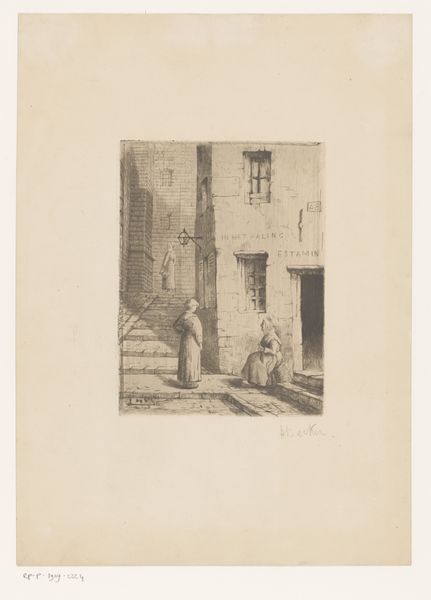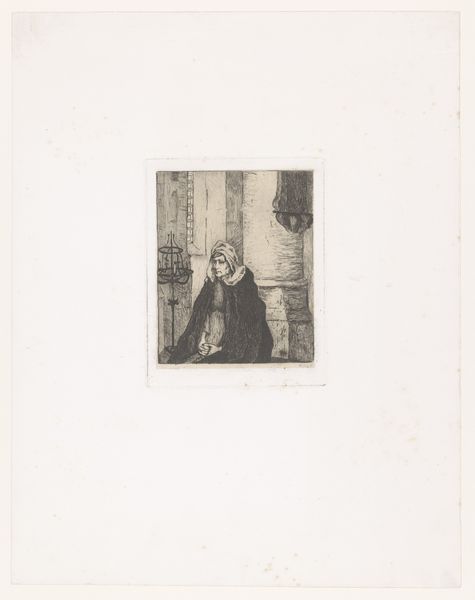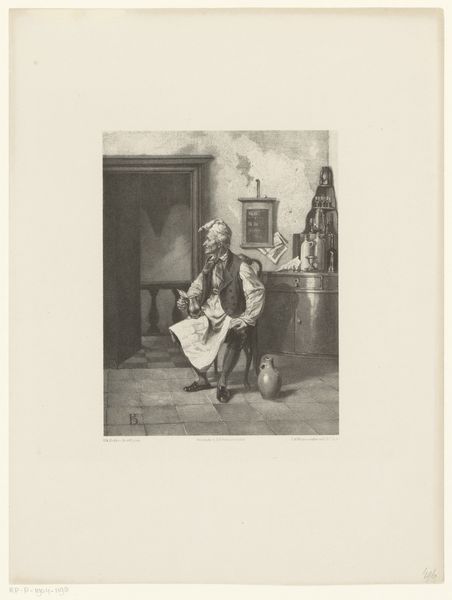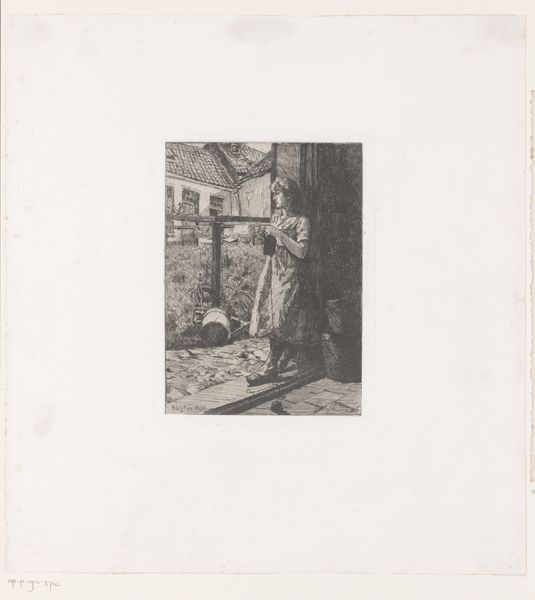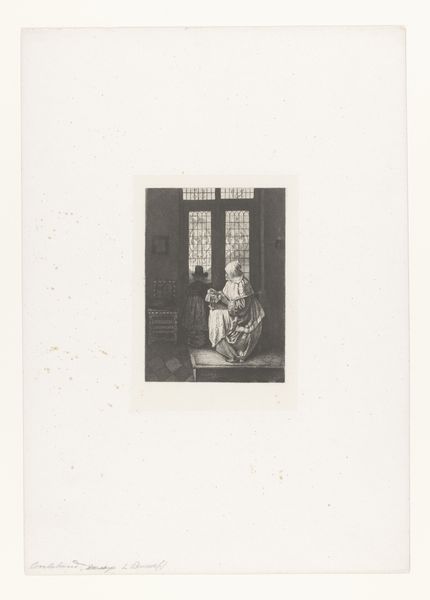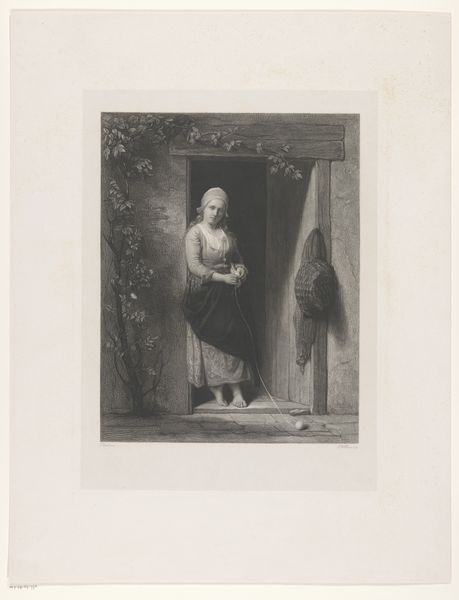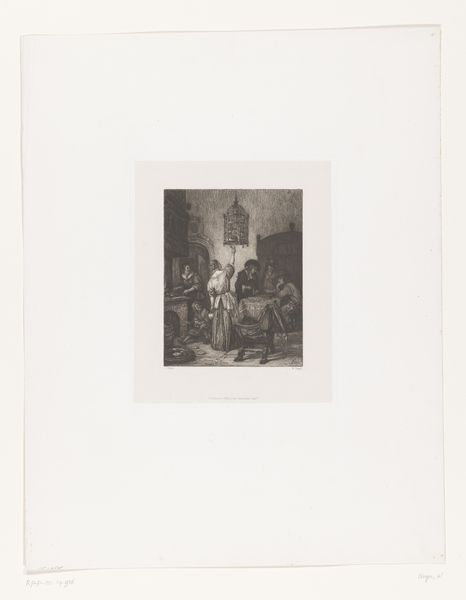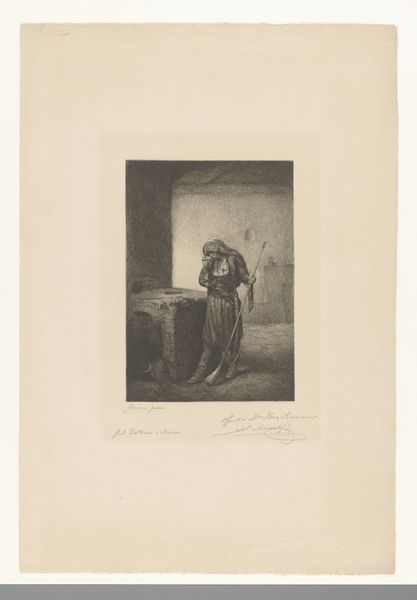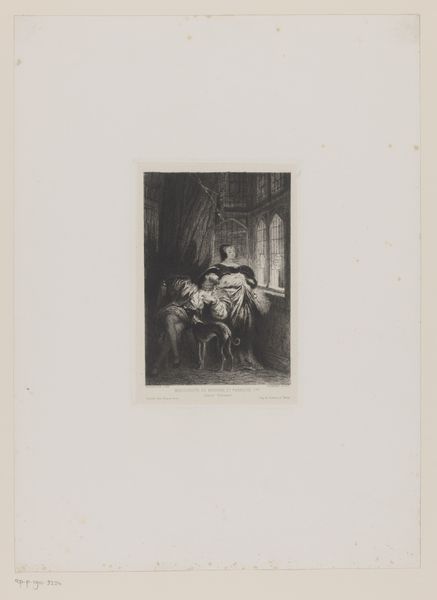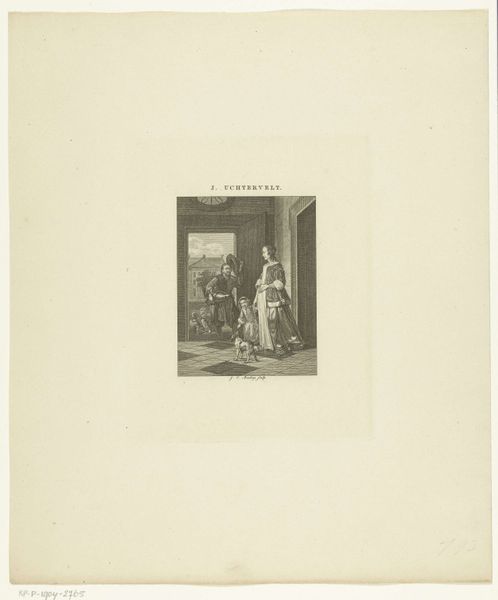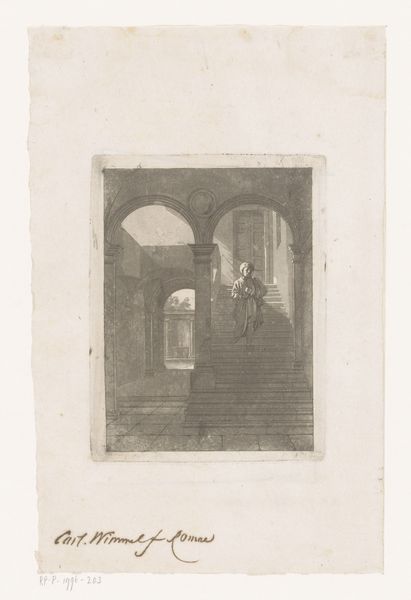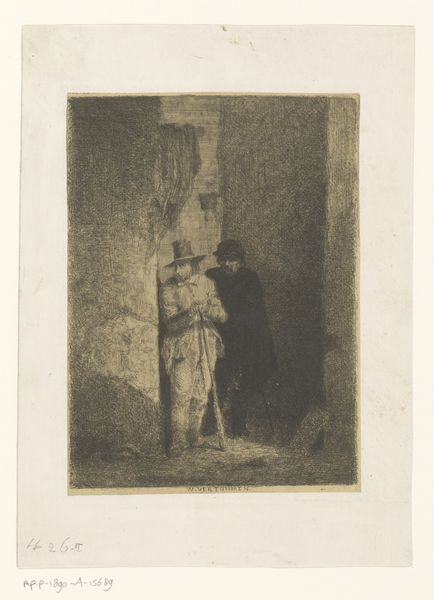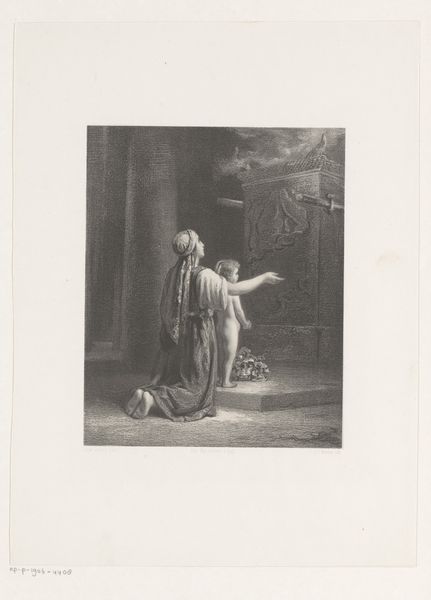
drawing, print, etching, paper, ink
#
portrait
#
drawing
#
ink paper printed
# print
#
impressionism
#
etching
#
landscape
#
paper
#
ink
#
orientalism
#
symbolism
#
genre-painting
#
realism
Dimensions: height 278 mm, width 232 mm
Copyright: Rijks Museum: Open Domain
Editor: This is "Oosterse priester voor een stoep," or "Oriental Priest Before a Sidewalk," an 1889 etching by Charles Berckmans. I'm struck by its subtle contrasts; it feels like a quiet, staged scene. What are your initial thoughts about the socio-cultural implications in play here? Curator: Indeed, it's a fascinating piece within the context of 19th-century Orientalism. Consider how the artist positions the priest – not within a grand, bustling marketplace, but in a subdued, almost theatrical setting. Doesn't that choice already speak volumes about the European gaze and the "staging" of the Orient for Western consumption? Editor: That makes sense. It's like Berckmans is curating a particular image, even if unintentionally. The realism mixed with impressionistic techniques feels… conflicted. How might the institutions displaying such art have shaped its impact? Curator: Museums and galleries became crucial sites for constructing and reinforcing narratives about the "Orient." Exhibiting this etching within such spaces solidified Western perceptions, framing the depicted culture through a lens of exoticism and often, colonial power dynamics. Did Berckmans challenge or reinforce those power structures, and how would audiences have perceived it in his time versus today? Editor: That's a crucial question! I'm now seeing this piece not just as a portrait but as a social document. The act of observing, representing, and displaying these images definitely carried political weight. Curator: Exactly! The politics of imagery are always present. Consider too how the relative accessibility of prints versus painting meant that pieces like this circulated much more widely, embedding their visual tropes into popular culture. Editor: This conversation has totally changed how I perceive this etching. It’s no longer just a scene; it’s a lens through which we can examine the complexities of cultural representation and the power dynamics embedded within it. Curator: Precisely. And remember, understanding the past is essential for navigating the visual landscape of our present.
Comments
No comments
Be the first to comment and join the conversation on the ultimate creative platform.
